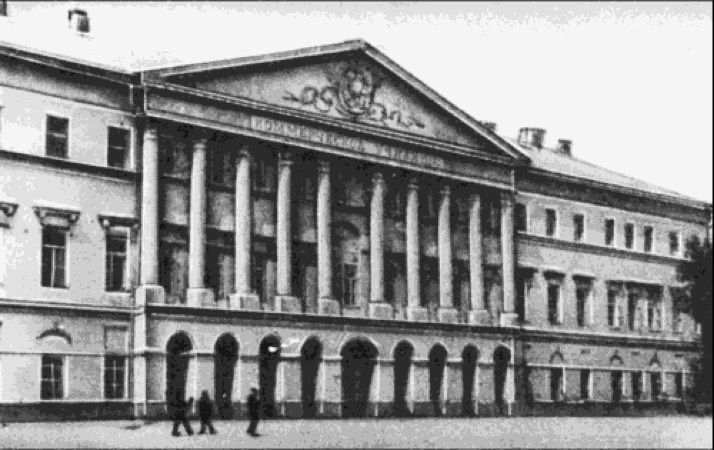Yeropkins' manor
**Eropkin Manor** appeared on Sofiyskaya Street in the 50s of the 17th century. She saw a lot of hosts, people of very different kinds. The first, Alexander Zubov, was the chief prosecutor of the Senate and had a notorious bribe taker. He owned the estate for a long time, but at the end of the century it passed to Major General Andrei Durasov. It was he who marked the beginning of the endless reconstruction of the estate, its expansion and improvement. With his light hand, she became really gorgeous. The brilliance of this place was so dazzling that the artist Dmitry Inditsev could not pass by. In its watercolor with a panorama of Sofiyskaya Street, the estate clearly stands out for its beauty against the background of other houses. At that time, it had three floors, it was decorated with a Corinthian portico and beautiful sculptures around it. It is possible that the author of the project is a talented Moscow architect Bazhenov, who did a lot in the open air at that time (his works include Pashkov's house and buildings in [Tsaritsyno Park] ( https://kudago.com/msk/place/caricyno/), and much more).
In the middle of the 19th century, the Eropkin estate housed the Mariinsky School for Girls, where future governesses were trained. This was the reason for another reconstruction of the building. On the left, its own church designed by architect Mironov appeared. The first floor of the estate became a spacious hospital of the educational institution itself, and the second and third floors became the church of the Entry of the Most Holy Theotokos into the Temple. At this time, Sergei Rachmaninoff found his inspiration here, writing six works specifically for the Mariinsky School. Behind the estate, a beautiful garden was laid out, a gazebo was built for recreation, and a bath for students was arranged on the Moscow River.
After the revolution, the fate of the Eropkin estate changed again. Until the beginning of the second half of the 20th century, there was the most ordinary school number 19, named after the critic V. Belinsky.
Nowadays, the estate has managed to avoid the threat of demolition, although the complex itself is still empty and needs restoration.
Address
st. Ostrozhenka 38
Address
st. Ostrozhenka 38
Address
st. Ostrozhenka 38
Website
Yeropkins' manor
Website
Yeropkins' manor
Website
Yeropkins' manor
Source
https://kudago.com/msk/place/usadba-eropkinyh/
Source
https://kudago.com/msk/place/usadba-eropkinyh/
Source
https://kudago.com/msk/place/usadba-eropkinyh/


